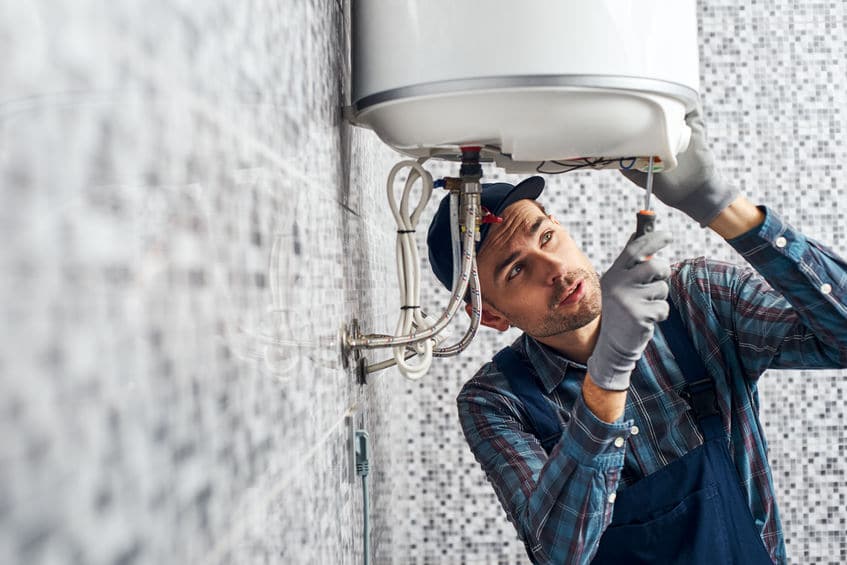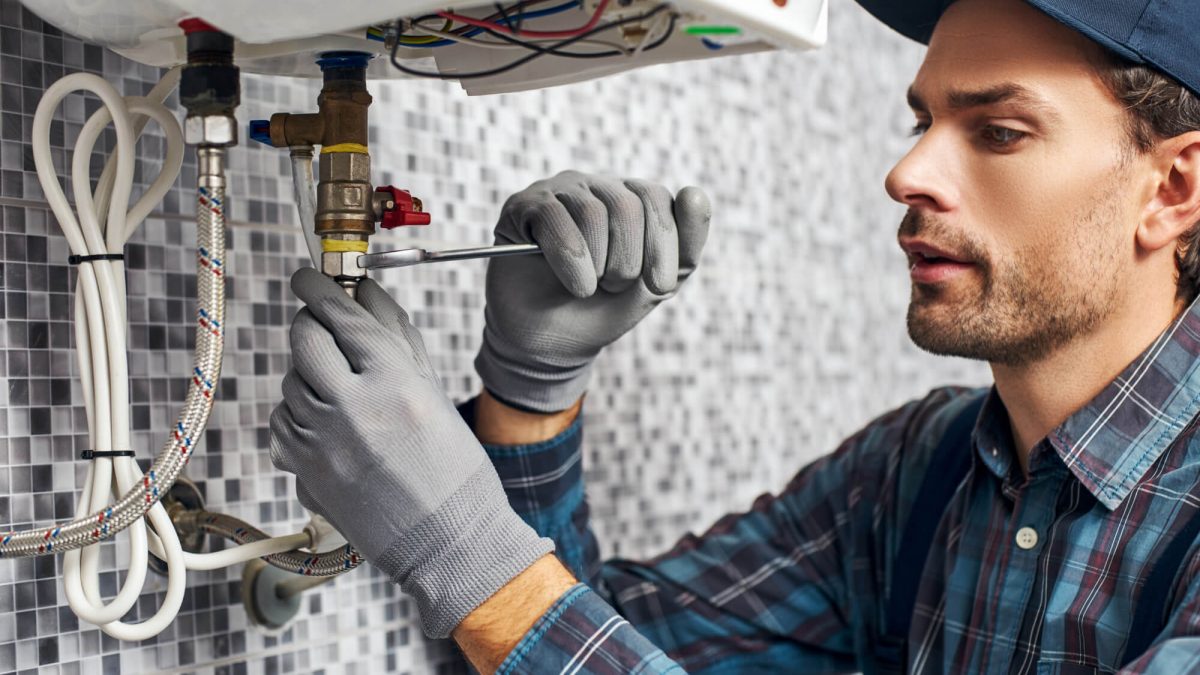Uncovering The Future of Plumbing: Developments and Advancements
Additional ResourcesHave you been looking for facts involving Innovative Plumbing Trends Transforming Construction?

Intro
The pipes market is undertaking a transformative stage driven by technological advancements and expanding issues for sustainability and performance. This post explores arising fads and advancements shaping the future of pipes.
Smart Plumbing Equipments
Incorporating clever technology into plumbing systems allows remote surveillance, leakage discovery, and automated maintenance. Smart sensing units and IoT (Net of Points) gadgets permit house owners and plumbing technicians to check water usage and identify issues in real-time, causing much more efficient source management and aggressive upkeep.
Water Effectiveness Solutions
With increasing emphasis on water preservation, ingenious services are being created to minimize water wastage in plumbing systems. High-efficiency fixtures, greywater recycling systems, and wise watering controllers are amongst the technologies assisting consumers minimize their water footprint while keeping comfort and ease.
Lasting Products
The shift towards sustainability includes plumbing materials, with an expanding choice for environmentally friendly options. Biodegradable piping products, such as PEX (cross-linked polyethylene) and HDPE (high-density polyethylene), offer sturdiness and resistance to rust without endangering environmental integrity.
Predictive Upkeep
Anticipating maintenance methods utilize data analytics and machine learning algorithms to anticipate and avoid plumbing concerns prior to they occur. By examining historical data and performance metrics, predictive upkeep algorithms can determine patterns and anomalies, allowing proactive interventions to avoid pricey fixings and disruptions.
Enhanced Reality in Plumbing
Increased Truth (AR) modern technology is transforming pipes by offering specialists with real-time aesthetic guidance for repairing and repair work jobs. AR-enabled smart glasses or mobile applications overlay digital information onto the physical atmosphere, assisting plumbers visualize pipeline designs, recognize covert leaks, and execute repair services with accuracy.
Influence of 3D Printing
The arrival of 3D printing has actually introduced brand-new opportunities in manufacturing plumbing parts. From custom-designed components to intricate pipe fittings, 3D printing permits quick prototyping and on-demand manufacturing, decreasing lead times and enabling greater customization in pipes layout.
Health and Safety Features
In response to enhanced issues for health and wellness, plumbing components are integrating attributes such as antimicrobial surfaces, touchless operation, and self-cleaning mechanisms. These developments not only enhance hygiene but likewise promote individual comfort and benefit.
Hygiene-focused Components
Touchless faucets, self-sanitizing commodes, and antimicrobial surfaces are coming to be increasingly prevalent in property and business settings, reducing the danger of germ transmission and promoting a cleaner, healthier setting.
Water Top Quality Tracking
Developments in water quality tracking technologies enable property owners to keep an eye on the pureness and safety of their water in real-time. Smart water quality sensing units can identify impurities, pH degrees, and temperature variants, encouraging individuals to take positive actions to ensure water security.
Remote Plumbing Services
Remote diagnostics and virtual support are reinventing the way pipes services are provided. Through video conferencing and remote accessibility modern technologies, plumbing technicians can fix concerns, offer assistance for do it yourself fixings, and also execute remote examinations, using greater availability and benefit to homeowners.
Difficulties and Opportunities
While pipes technologies hold tremendous guarantee, they likewise present challenges such as information personal privacy worries, regulatory compliance, and the requirement for labor force training. Attending to these difficulties calls for cooperation in between industry stakeholders and regulatory bodies to make sure risk-free and accountable implementation of new technologies.
Regulatory Landscape
Regulatory structures play a critical duty fit the adoption of pipes technologies, with standards and codes governing every little thing from water effectiveness to item security. As technologies remain to advance, governing bodies need to adapt to make certain consumer defense and ecological stewardship.
Future Overview
The future of plumbing is defined by proceeded development and assimilation with other sectors such as IoT, renewable resource, and structure automation. By welcoming lasting practices, leveraging emerging technologies, and prioritizing user-centric design, the pipes sector is poised to address the evolving needs of culture while decreasing its ecological footprint.
Verdict
Finally, the future of pipes is defined by a merging of modern technology, sustainability, and user-centric design. By welcoming clever remedies, sustainable materials, and aggressive maintenance methods, the pipes market can boost efficiency, advertise safety, and add to an extra lasting future.
The Future of Plumbing: Trends and Innovations to Watch
Introduction to Future Plumbing Trends
The future of plumbing is being shaped by several key factors, including technological advancements, environmental concerns, and changing consumer expectations. These factors are driving the development of new products, services, and practices that enhance the efficiency, sustainability, and convenience of plumbing systems.
Key Trends and Innovations in Plumbing
Smart Plumbing Systems: The integration of smart technology into plumbing systems is transforming the way we manage water usage and detect issues. Smart leak detectors, automated water shut-off valves, and smart faucets are just a few examples of how technology is enhancing plumbing systems. These devices provide real-time data and remote control capabilities, allowing homeowners to monitor and manage their water usage more effectively. Water Conservation and Efficiency: With increasing concerns about water scarcity, there is a growing emphasis on water conservation and efficiency. Innovations such as low-flow fixtures, greywater recycling systems, and rainwater harvesting are becoming more popular. Plumbers are adopting these technologies to help customers reduce their water consumption and save on utility bills. Sustainable Materials: The use of sustainable materials in plumbing systems is gaining traction. This includes the adoption of recyclable and biodegradable materials, as well as the use of non-toxic and eco-friendly products. Sustainable materials help reduce the environmental impact of plumbing systems and promote long-term sustainability. Energy-Efficient Water Heaters: Advances in water heating technology are leading to the development of more energy-efficient systems. Tankless water heaters, solar water heaters, and heat pump water heaters are becoming more prevalent. These systems offer significant energy savings and reduce the carbon footprint of homes and businesses. Trenchless Technology: Trenchless technology is revolutionizing the way plumbing repairs and installations are conducted. This method allows for the repair or replacement of pipes without extensive excavation, minimizing disruption and reducing costs. Techniques such as pipe bursting and cured-in-place pipe (CIPP) lining are gaining popularity. Health and Safety: The focus on health and safety is driving innovations in plumbing systems. Touchless faucets and fixtures, antimicrobial materials, and improved water filtration systems are being developed to enhance hygiene and protect public health. Plumbers are adopting these innovations to meet the growing demand for safer and healthier plumbing solutions. Remote Diagnostics and Monitoring: The ability to diagnose and monitor plumbing systems remotely is becoming increasingly important. Remote diagnostic tools and sensors allow plumbers to identify issues and perform maintenance without the need for on-site visits. This enhances efficiency and reduces the need for costly emergency repairs. Impact of Future Trends on the Plumbing Industry
Enhanced Efficiency: The adoption of smart technology and energy-efficient systems will enhance the efficiency of plumbing systems. This will lead to reduced water and energy consumption, lower utility bills, and improved performance. Sustainability: The focus on sustainability will drive the development and adoption of eco-friendly plumbing solutions. This will contribute to the conservation of natural resources, reduction of waste, and protection of the environment. Improved Customer Experience: The integration of technology and innovative solutions will improve the customer experience. Homeowners will have greater control over their plumbing systems, access to real-time data, and the ability to manage their water usage more effectively. Increased Demand for Skilled Plumbers: The adoption of new technologies and materials will require plumbers to acquire new skills and expertise. There will be an increased demand for skilled plumbers who are knowledgeable about the latest trends and innovations. Cost Savings: The use of efficient and sustainable plumbing solutions will result in cost savings for both homeowners and businesses. Reduced water and energy consumption, lower maintenance costs, and fewer emergency repairs will contribute to overall affordability. Preparing for the Future of Plumbing
Stay Informed: Keep up-to-date with the latest trends and innovations in the plumbing industry. Attend industry conferences, participate in training programs, and engage with manufacturers to stay informed. Invest in Training: Ensure that you and your team are trained in the latest technologies and installation techniques. This will enable you to offer cutting-edge solutions to your customers and stay competitive in the market. Promote Sustainable Solutions: Highlight the benefits of eco-friendly and energy-efficient plumbing solutions to your customers. Educate them about the advantages of adopting sustainable practices and products. Leverage Technology: Embrace smart technology and remote diagnostic tools to enhance your services. Offer remote monitoring and maintenance options to provide added convenience and value to your customers. Collaborate with Manufacturers: Partner with manufacturers of innovative plumbing products to gain access to the latest solutions and technical support. This can also provide opportunities for joint marketing efforts. Focus on Customer Education: Educate your customers about the benefits and functionality of new plumbing technologies. Provide guidance on how to use smart systems and maintain sustainable plumbing solutions. Conclusion
The future of plumbing is being shaped by exciting trends and innovations that promise to enhance efficiency, sustainability, and convenience. By staying informed and embracing these changes, plumbers can provide superior services to their customers and contribute to a more sustainable future. The adoption of smart technology, sustainable materials, and energy-efficient systems will drive the evolution of the plumbing industry, creating new opportunities and challenges. By preparing for the future, plumbers can ensure their success in a rapidly changing market.

As an avid reader on , I was thinking sharing that information was sensible. So long as you enjoyed our post please consider to share it. We value your readership.
Book